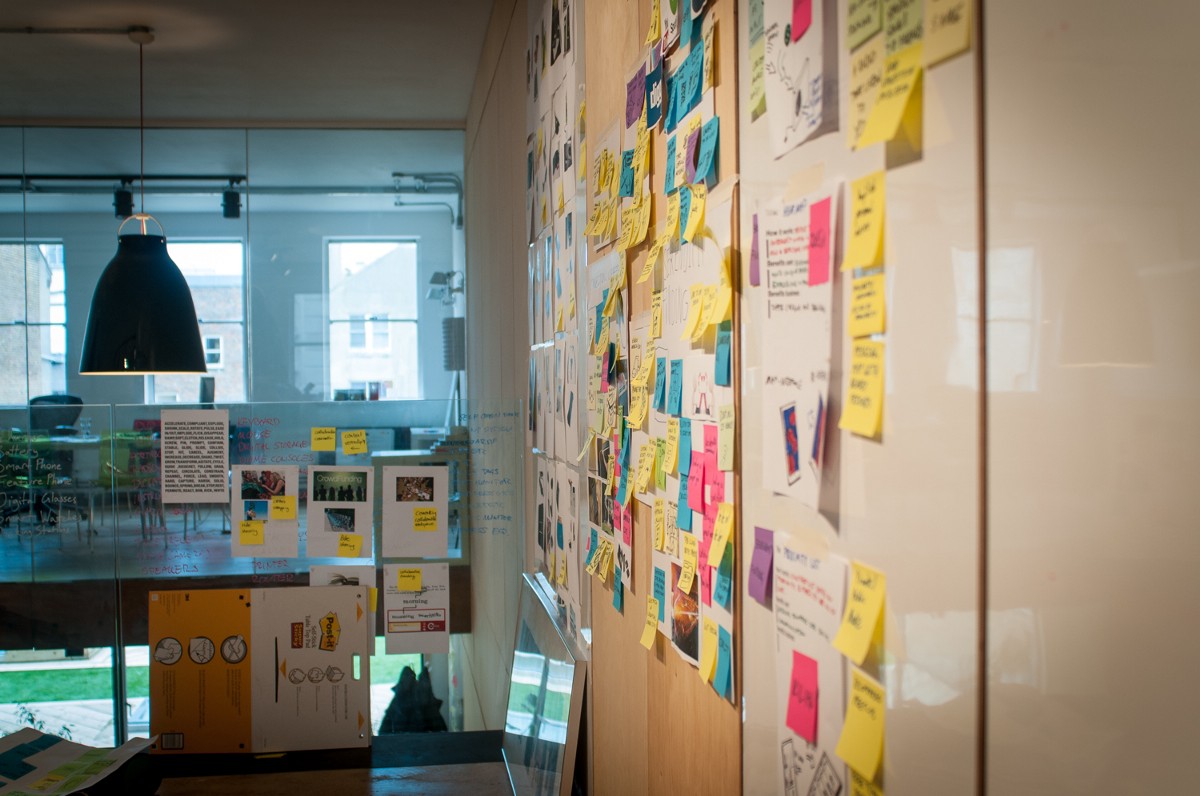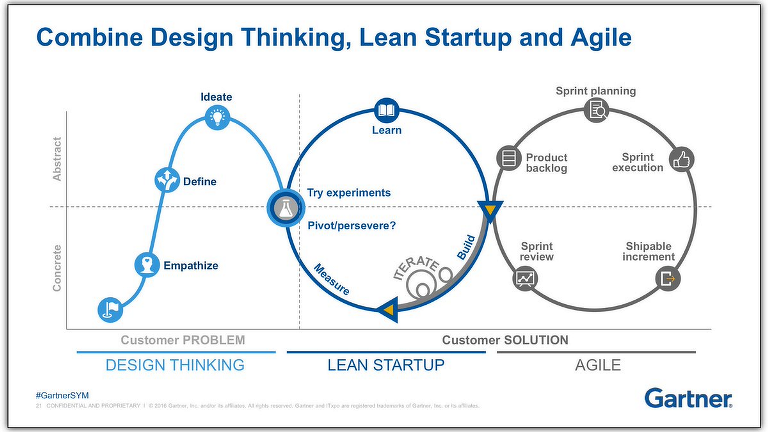What if you need to create an innovative product in a traditional company?

What kind of "golden hammer" are they trying to apply to the development of innovative products in Russian large companies? Over the past 5 years, there has been a trend in the market for internal corporate entrepreneurship (Inner Corporate Venture, hereinafter ICV), and most large companies fearlessly begin to introduce new approaches to doing business and create innovative laboratories, teams and divisions specifically for this. Such terms as MVP (Minimum Viable Product - the minimum viable product), Lean Startup (lean startup), etc. are used in everyday life.
An example of a golden hammer in IT
Our hero, a project manager who previously worked as the head of the system analysts department at the bank, gets a new position and receives the first task - to make a service from scratch, the task of which will help the bank's clients in managing personal finances. Our hero was faced with IT tasks, but only from the description of the requirements that he received from the operations department. It is not surprising that he decides to use familiar tools, and within a few hours / days / months he drafts the service project, looks at what the competitors have, google what basic functions should be for controlling personal finances, copy Easyfinance interfaces, etc. However, the result does not predictably suit his manager, nor clients, nothing “takes off”. How so? After all, he has MVP!
And here our hero is trying to understand what he did wrong! More precisely, it is very difficult for him to admit his mistake (see the Dunning - Krueger effect), therefore, he is looking for answers in the “if ...” format and wants an explanation.
What is the basis for the development of innovation methodology?
At the moment, there are three main cycles of development of new products, processes and systems. They can be briefly described as follows:
Design thinking
Design thinking refers to creative strategies that developers use to identify problems that arise during the development of a new product. Brainstorming to develop “breakthrough” ideas that will save the company from ruin, in its traditional sense, by the way, is one of the worst ways to develop a new idea. On the other hand, we can dramatically increase the effectiveness of such events if we can invite the right people, create the right atmosphere and use the right tools. Tim Brown, founder and president of the world-famous design consulting company IDEO, gives the following definition of design thinking: “design thinking is a human-centered approach to innovation development,
Thrifty startup
Lean startup is used to transform these proposed solutions into business models, which are based on assumptions, the viability of which is immediately tested as part of a problematic interview or an interview about a solution for separating “grains from the chaff”, followed by a change in the proposal taking into account the requirements of customers. There are statistics that are not forgotten to be given in any presentation for startups - approximately 95% of startups fail, with the number one reason being ignorance of the laws of the market and hallucinations of the team: a product is created for which no one wants to buy or pay more than the real cost of such product, including its delivery.
The concept of a lean startup was born in Silicon Valley towards the end of the first decade of this century, although it has its roots in the lean manufacturing system of the Japanese Toyota company. However, the Toyota system has its drawbacks: it teaches us how to effectively create a product, but it doesn’t teach us where to start developing it.
Agile or agile iterative development
Once you have a very good idea about what you can offer on the market and you have decided on the fundamental business model, you can begin the active phase of its implementation on the market, but do not forget about the dense iterative interaction with customers.
All this runs counter to traditional ideas, according to which the development team must strictly adhere to a predetermined algorithm of actions, regardless of the profit or its absence, which this kind of activity has already brought or has not brought. Agile was based on a growing iterative approach, which replaced fundamental planning at the initial stage of the project. It involves changing requirements as the project progresses and continuous feedback from the end user.
How to put it all together?
Design thinking helps us to get more effective ideas, a lean strategy allows us to translate these ideas into viable business models, and a flexible approach helps us quickly and quickly deliver the product to the market while having constant feedback from customers and providing them with exactly what they need. necessary. Gartner specialists proposed the following scheme for combining these three approaches on the project:

The complex use of design thinking, a lean startup and a flexible approach carries not only a greater likelihood of developing a more productive idea, but also translating this idea into real products, which will also have instant commercial value to customers and at the same time do not carry dangers of disruption of the project schedule and higher cost of the product, which is what large companies sin in the development and production of innovative products. In addition, your company employees get the opportunity to feel involved in a more creative and interesting process.
Instead of a conclusion ...
There is no magic in creating an innovative product; there is a set of working tools at each stage of work, confirmed by many companies.
What to do to our hero? One of the main ideas is to get as much feedback from the market as possible and enter your idea into the market before the development budget is spent.
